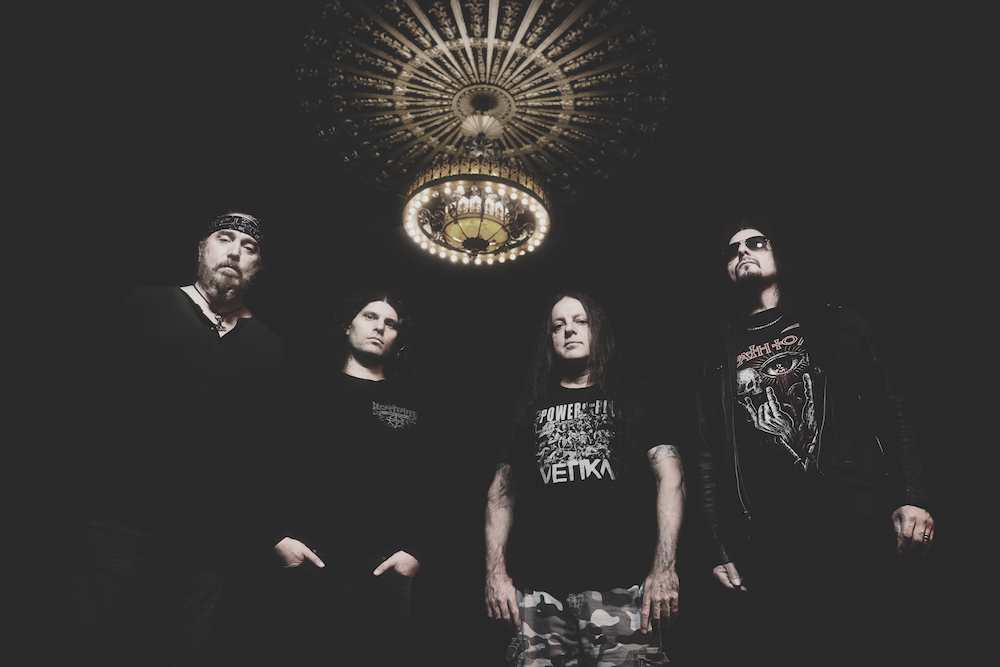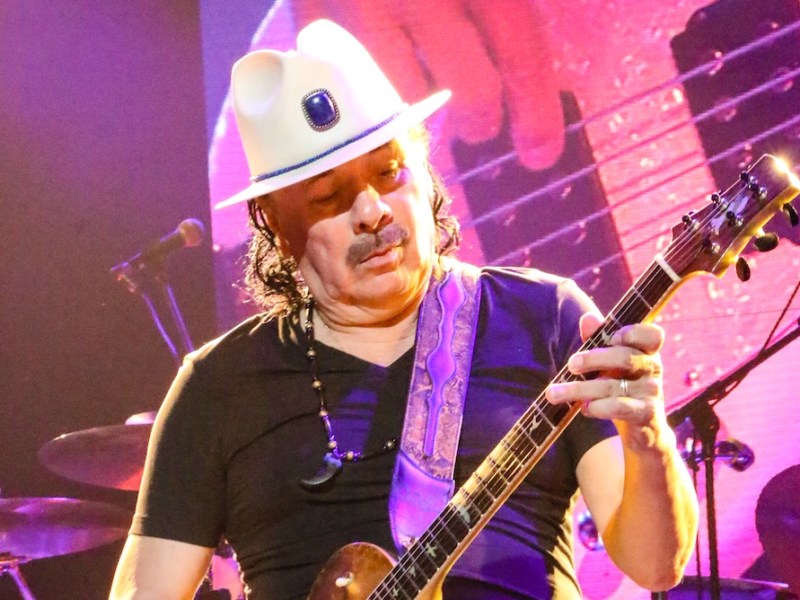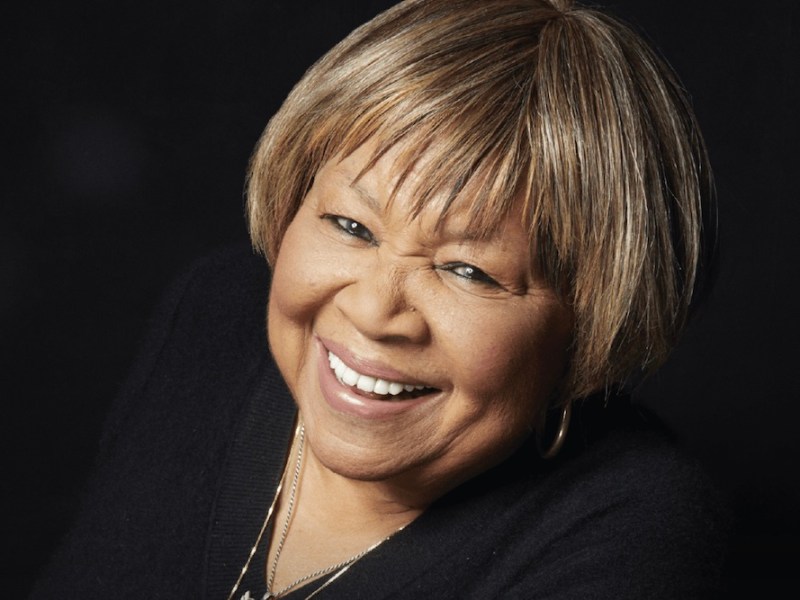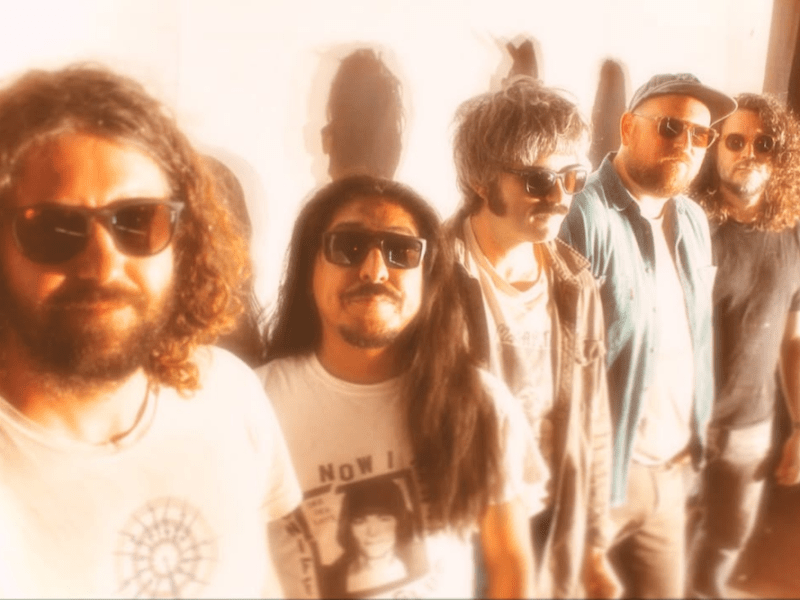 Death to All celebrates the music of pioneering death metal act Death and includes members that actually played in the band. Credit: Alex Solca
Death to All celebrates the music of pioneering death metal act Death and includes members that actually played in the band. Credit: Alex Solca
When Chuck Schuldiner, frontman for the pioneering death metal band Death, died at 34, he left behind a legacy most musicians who live decades longer can only dream of.
Schuldiner and a rotating cast of musicians laid down the template for one of metal’s most enduring subgenres. Not only can they be credited for creating death metal with the punishing riffs, barked vocals and morbid themes explored on their earlier albums, their later, more refined incorporations of fusion and prog paved the way for technical death metal and helped define that scene as well.
Some of the musicians who played with Schuldiner, who died of a brain tumor in 2001, have teamed up to keep that influential music alive. Their band, Death to All, will hit San Antonio’s Vibes Event Center on Saturday, Nov. 22, to celebrate two of the band’s landmark albums, Spiritual Healing (1990) and Symbolic (1995).
The Current spoke with drummer Gene Hoglan on Zoom about the tour, his time with Schuldiner and the complex rhythms that define Death’s music. We also considered whether this band offers the metal community at large a chance to honor Schuldiner’s outsized influence.
The following interview has been edited for length and clarity.
What would you say to someone who says, “I’m not familiar with Death. Where do I start?”
Well, since Death has had such a very historical musical evolution, I would probably have them pick a song from album No. 1, which was Scream Bloody Gore, and then take that all the way, play a song from Sound of Perseverance [the band’s final LP]. And you could hear the musical journey of the band. And then, work your way inwards and see the evolution, from one side over to the other side. I would tell somebody, “Hey, check out where the band started when they were teenagers, and then see where they ended up when they were in their later 20s.”
In the documentary Death by Metal, Chuck has an Iron Maiden shirt on. And when you think of today’s death metal contenders, you usually see band members wearing shirts for more underground bands. Not that everybody doesn’t have a respect and love for Maiden, he seemed to have a sense of larger stages.
Well, Chuck was always a staunch proponent of the traditional metal. He was always all about it. And especially when it was around the Symbolicera. There was always tunes play-ing somewhere. At that time, it was like all the latest Dio stuff. Like I think the Dio album Strange Highwaysmight have been the one that was out at the time. You know, which led to Angry Machinesafter that, which, you know, Chuck was one that brought me back to Dio. I admit, I was probably kind of veering away from the traditional stuff, because what I was finding — back in like ’94, ’95 — was that I was excited to create the next level of music, whatever it was. And so, for me, traditional metal at that point, wasn’t quite exciting me the way it was Chuck. But Chuck was just an absolute purist when it comes to that stuff, listening to tons of Japanese stuff. He’s like, “Check out the productions on these albums.” This is just good — good players on good records and having good engineers using good studios and good microphones and good equipment, you know. And it’s a marvel what can be done with that sort of approach.
But Chuck was definitely leaning away from the same interests that he had when he was in his late teens writing Death material. I’ve mentioned this before, when Symbolic came out, it was a head scratcher for a lot of people. It was not immediately addressed as, “This is an all-time classic.” A lot of the old hardcores wanted their death metal to be like Cannibal Corpse and Deicide and Morbid Angel, Obituary, whatever. But Chuck was like, “I’m not the same person I was almost a decade ago when I wrote stuff. I’m on my musical journey, and I’m going to write from my musical perspective.”
Something that always struck me about Death and Chuck’s riffs, especially as the band progressed, is that they’re very deliberate. There may be a time when it feels like it should be a riff in 7/4, and he pushes it to 9/4 or whatever. Is Death’s music difficult to feel for you? Do you have to be deliberate and count?
I am a feel person. I count very little. I count as little as I need to. So, I definitely feel things, and I’m pretty quick to hear if something’s in a five or a seven or a nine, and then just work on it from there. And I’m not musically trained at all. I’m completely self-taught as a drummer, as a guitarist. So that’s one thing that I’m not sure that ever gets pointed out, or perhaps maybe it’s even overlooked, but a lot of Chuck’s riffs were just deceptively simple. They weren’t in crazy time signatures. It was all the players behind it doing all this wacky stuff, all this crazy stuff that makes it sound like it’s really complicated. But you can pick up any Death album and play the riffs just straight across with it. Richard Christy, for instance, going out of his mind playing the drums that he does. Just completely unplugging that brain of his and making the most technical, psychotic, busiest drum beats imaginable over some pretty simple riffing. So, that’s one thing I’ve always noticed about the Death catalog … is that Chuck was a pretty traditional writer. Chuck was self-taught as well. Most of us were.
It’s all a matter of feel. Sure, I can count. There are times when you have to count, but for the most part, it’s just like, yeah, you feel the pulses. That was kind of the reason why I picked up all the material on guitar. That was my sheet music for it, I guess, or my charts. It’s like, I can play the riff. Okay, now I can just think about that riff. I’m good at visualizing. I can write an entire album of drums without playing any drums. I don’t think that’s anything that spectacular or anything, but that’s one thing I’ve done on many an occasion, where I don’t get to rehearse something. I have to show up in the studio knowing what I’m doing and I’m on a plane as I’m learning the material.
The Death to All approach is that the music is in the now. If there are different patterns or different fills or whatever that come about with this group of musicians, you’re open to the music sort of living and breathing, right?
Absolutely. And so, one thing I do try to do — say, if I’m playing a Sean Reinert song — I try to emulate Sean’s style as much as I can. Because for me, it’s kind of like, if you’re going to play a Rush song, you’re not going to put your own spin on Neil Peart. That’s just as an example. Neil Peart, for me, was a very understandable drummer.
He pushed the limits of what he was doing, but it was always really gettable. That’s why Neil was, like, my favorite prog drummer, because I can get him. Guys like Terry Bozzio, and in certain elements of like, Bill Bruford, it’s like, “Wow, you guys play some crazy stuff. I can emulate as good as I can, but…” Neil Peart was just always 100% meat-and-potatoes prog drumming, which was killer. It’s understandable. It has elements of some bouncy musicality, definitely, but at the bottom line, it’s understandable. It’s gettable. You can cover it. You can copy it.
I get this sense that fans know Death and Chuck much better now than when all these records were new in the ’90s. Are the Death to All shows bigger than the Death shows were back in the day?
You know what? I would have to say yes, because I’ve done both. When we were putting out Individual Thought Patterns and Symbolic, both albums were rather mildly accepted. Journalists understood it, and you’d have a small pocket of fans that are like, “Hey man, I’m here for the band. I get it.”
Death has always struck me in a way as the Velvet Underground of extreme metal. Maybe enough people didn’t hear them the first time around, but everybody that did hear them formed a band themselves and their influence is sort oversized as a result of that.
Indeed. I understand that analogy perfectly. I mean, look what Velvet Underground went and influenced, you know, a lot of music that I love. I admit, man, Velvet Underground, that wasn’t my scene, but all the bands that listened to them, and took their cues from that, I love a lot of those bands.
Given this monstrous presence, why isn’t Death better known?
There was a nickname that was placed upon Chuck that he was never comfortable with, and that was the “Godfather of Death Metal,” and he was like, “Man, there were bands doing this kind of stuff before me. I love Possessed, I love Slayer, I love Venom, I love Mercyful Fate, you know, bands that were playing this sort of stuff. He was a huge Possessed fan. The lineage of much death metal, of course, goes back to Chuck, but Chuck would always try to pass that lineage back. He would talk about Venom, Mercyful Fate, Possessed, you name it. There was a great advertising tagline, I remember, on the Spiritual Healing album. It said, “Death, the first word in death metal,” and I was like, “Wow, whoever came up with that is a genius. That’s great!”
$44.67, 7 p.m. Saturday, Nov. 22, Vibes Event Center, 1223 E. Houston St., (210) 255-3833, vibeseventcenter.com.
Subscribe to SA Current newsletters.
Follow us: Apple News | Google News | NewsBreak | Reddit | Instagram | Facebook | Twitter | Or sign up for our RSS Feed
Related Stories
The Grammy-winning group canceled its April 22 show after 77-year-old bandleader Carlos Santana fell ill.
San Antonio’s The Grasshopper Lies Heavy is also celebrating the release of a crushing new album.
Call it a jam band, call it country rock. We call it required listening.



